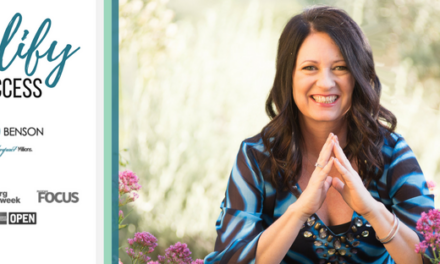
AUGUST 23, 2022
In This Issue: Creators share how to develop courses that attract and retain students. Learn how one creator turned her divorce into a growing content business. And find out how Google just got the point (again).
full tilt
Tips for Building Online Courses That Keep Students Engaged, Coming Back
Too many online course creators act like the teacher in Ferris Bueller’s Day Off. They spend more time boring and less time energizing their students.
Some creators publish successful online courses that net revenue in the six or even seven figures. They know how to keep their students tuning into the course and coming back for more classes.
I chatted with successful online course creators to find out what works. Here’s their advice.
Outline the course: Marc Maxhimer, a professionally trained educator and former longtime public school teacher, creates courses for The Tilt. He develops a basic outline often centered around a single question. Then, he lists the takeaways.
“Good teaching is telling them what you’re going to learn; tell them about it; help them through it, and then remind them what they learned,” Marc says.
Chunk up the class: Remember Zoom fatigue is real. Be mindful that hours online to take a single course can be a heavy lift.
Podcaster Simran Kaur, founder of Girls That Invest, runs her investing class over six weeks with two hours of content each week. But she splits those two hours into multiple sessions of about 10 minutes or so each.
Make it asynchronous: Your students could be in any time zone with every schedule imaginable. Asynchronous – no required time or place – teaching often is best for content delivery.
Though Simran uses an asynchronous strategy, she films her class sessions the same week they launch because they involve current events. “At a price point of $299, I didn’t want to give people a stock standard you make with some old videos,” she says. “I still want them to learn in real time.”
Assign some work: Nobody loves busy work, but homework or activities can help reinforce the instruction.
Simran builds quizzes into the platform, and students answer questions based on the videos they just watched. Nothing is too in-depth, and they don’t have to print anything or get out a pen and paper.
“I found it really helpful to give people something that they can [use] … to measure their own learning and feel like they’re getting something out of it,” she says. “And watching it, knowing there is going to be a quiz at the end, I think you’re a little bit more likely to hold onto the information more.”
Expand their learning: Marc includes digital files with information that goes beyond what students might learn in the course. Content entrepreneur Christina Rozema, the founder of New Wellness Perspective, offers links to TED Talks, her ebooks, worksheets, and other sources so students in her classes of healthcare professionals can continue to lead healthier lives.
“I try to make it as curated as possible … so people can pick and choose what it is they want to try,” she says.
Consider audio: People might not even have time to sit in front of a screen and watch your course. But they may have the bandwidth to listen to your instruction while driving to work or walking the dog.
That’s why Christina extracts the audio from her Zoom modules and turns it into a podcast version for registered students. “I’m trying to make it as easy as possible to get them the material,” she says.
– Sarah Lindenfeld Hall
Want to read a little bit more? Full-length version found here.
content entrepreneur spotlight
Entrepreneur: Michelle Dempsey-Multack
Biz: Moms Moving On
Tilt: Support for divorced women
Primary Channels: Website, podcast (nearly 1M downloads), Instagram (164K), book
Other Channels: Facebook (4.1K), Twitter (1.4K)
Time to First Dollar: Almost from the start of her content tilt shift
Rev Streams: Courses, coaching, podcast sponsorships, paid membership community, book
Our Favorite Actionable Advice:
- Don’t monetize everything: Michelle wants to serve her audience with a range of products, from her free podcast to her $20 book and her workshops to one-on-one coaching.
- Tie everything to your mission: Michelle makes every business decision based on her mission – to help moms take their emotions out of the co-parenting and divorce process and make the best decisions for themselves and their kids.
- Become a trained expert: Michelle could answer her audience’s questions based on her personal experience, but she didn’t think that was enough. She furthered her education to become trained in the field and brings experts onto her podcast.
– Sarah Lindenfeld Hall
All the Story: To learn more about Michelle, check out the longer story.
Know a content creator who’s going full tilt? DM us. Or email [email protected].
things to know
Money
-
Paid creations: Author Beth Revis uses her Patreon subscribers to help shape the plots of her one-chapter-at-a-time story releases. Voting starts Tuesday and the new chapter posts the following Sunday. (School Librarian Journal; h/t Simon Owens)
Tilt Take: People who have a direct stake in your content creation will feel a stronger bond with you and your brand. -
Transparency rules: The UK’s Advertising Standards Authority reprimanded an advertiser whose host-read promotion wasn’t sufficiently marked. He simply said, “Back to the podcast.” (Podcast Movement; h/t Sounds Profitable)
Tilt Take: Accepting sponsor money means accepting the responsibility of letting your audience know you did. It applies to podcasts, social media, blog mentions, etc.
Audiences
-
All about people: Google only wants to help. Its recent “update aims to better reward content where visitors feel they’ve had a satisfying experience, while content that doesn’t meet a visitor’s expectations won’t perform as well.” (Google Search Central)
Tilt Take: They list a bunch of questions that they consider. Not only are they smart for SEO, but they’re a helpful outline of what a successful content business does. -
Turn on: LinkedIn’s head of creator programs says don’t forget to turn on Creator Mode. That’s the way LinkedIn users can follow you. She also reminds creators to always include a call to action that inspires your community to comment. (Insider)
Tilt Take: LinkedIn may be late to the creator game, but take it seriously if your potential audience is there.
Tech and Tools
-
Water down: Download your YouTube Shorts to use on other platforms and you’ll soon find a watermark on the video indicating its YouTube origins. (Team YouTube via Lindsey Gamble)
Tilt Take: Just another reminder of who controls your content. -
Less negativity: Twitter is testing a filter option for replies. Its automated system hides replies to your tweets that could use potentially harmful or offensive language. (Social Media Today)
Tilt Take: It’s not a great solution, but it might help for the most egregious violators.
And Finally
-
Food for thought: “The platforms do not need the creators to find success for their respective business models to work. This is because, they monetize creators by harnessing aspiration at scale.” (Hypebot)
Tilt Take: Content entrepreneurs do better when they grow their businesses, so they don’t have to rely on social platforms.
the business of content
- A Strategy for Dealing with Content Burnout (Content Inc. podcast)
- Zuck’s Metaverse Is Embarrassing (This Old Marketing podcast)
- Disagree with a client? Here’s some positive help. (Small Business Trends)
- Experts offer tips on succeeding in a downturn. (Morgan Stanley)
- What’s the best advice these entrepreneurs got? (Forbes)
the tilt team
Your team for this issue: Joe Pulizzi, Pam Pulizzi, Ann Gynn, Laura Kozak, Marc Maxhimer, and Dave Anthony, with an assist from Sarah Lindenfeld Hall.
Get more of the Full Tilt stories on TheTilt.com.
Know a content creator who’s going full tilt? DM us or email [email protected]
Want to advertise on The Tilt? Go here.
Or email us at [email protected]
Interested in the tools we use? Check out our Tilt Tech Stack here.
Was this email forwarded to you? Get your own sub here.
Copyright ©2022 Tilt Media LLC All rights reserved.
Update your preferences | Unsubscribe | 17040 Amber Drive, Cleveland, OH 44111





